North Carolina DMV Practice Test 4
1/36
There's no tags or description
Looks like no tags are added yet.
Name | Mastery | Learn | Test | Matching | Spaced |
|---|
No study sessions yet.
37 Terms
What is the appropriate action to take when approaching a railroad crossing that does not have signals to direct traffic?
Slow down and be prepared to stop.
To pass a slower-moving vehicle on a two-lane, two-way road, you must:
Use the lane that belongs to oncoming traffic.
Only pass if you may safely and legally do so.
Is it legal to cross a double solid yellow centerline to pass?
No.
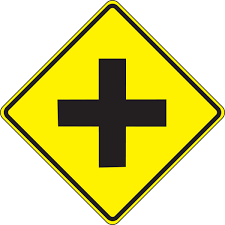
This road sign means:
Intersection ahead.
When passing an emergency vehicle stopped on the side of the road, drivers should:
Vacate the lane closest to the emergency vehicle or slow down.
You should honk your horn when you:
See a child that is about to run into the street.

If you see this sign above your lane, you:
Must exit the freeway, if you stay in your current lane.
When dealing with pedestrians, a driver must:
Always yield the right-of-way even if the pedestrian is in the wrong.
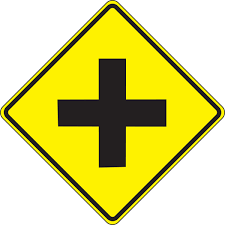
This sign shows one type of:
Intersection
If your vehicle begins to skid, you should:
Turn your steering wheel in the direction you want to go.
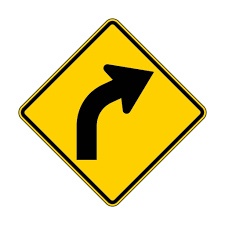
This sign means:
Curve ahead.
When changing lanes, you should:
Always check your blind spot.
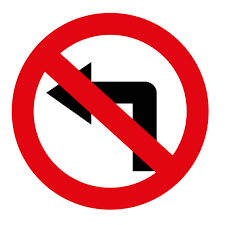
This sign means:
No left turn
The percentage of highway deaths caused by drunken persons is about:
38 percent.
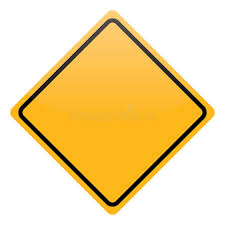
This sign is a:
Warning sign.
When approaching a school bus that is stopped on the opposite side of a center turning lane on a three-lane roadway, drivers:
Must come to a complete stop.
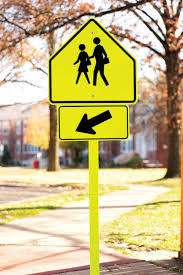
At a school crossing sign, you should:
Watch for children and be ready to stop.
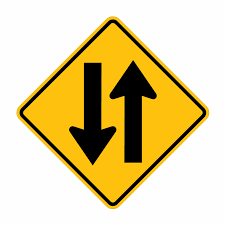
This sign means:
Two-way traffic.
Drivers should check their mirrors approximately every:
10 seconds.
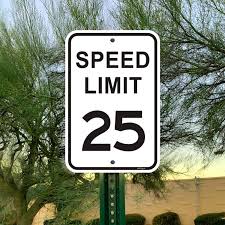
The posted speed limit shows:
The maximum safe driving speed under ideal road and weather conditions.
If two drivers arrive at the same time to an open intersection:
The driver on the right has the right-of-way.
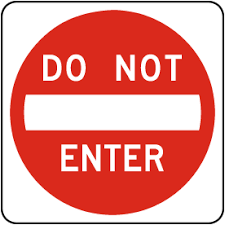
This road sign means:
You are about to enter a one-way street from the wrong direction.
You come to an intersection displaying a flashing red light. You should:
Come to a full stop and go when it is safe to do so.
When faced with an oncoming car to the left and a bicyclist to the right, you should:
Let the car pass and then pass the bike.
If you are involved in a serious motor vehicle crash:
Stop.
Call the police.
Determine if anyone is injured.
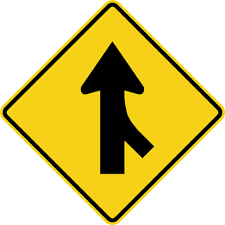
This sign means:
Merging traffic from the right.
To change lanes you should:
Signal, check your mirrors, check your blind spot in the direction you plan to move, then change lanes.
You are driving along a street and hear a siren. You cannot immediately see the emergency vehicle. You should:
Pull to the curb and look to see if it is on your street.
When the driver behind you wants to pass, you should:
Slow down to allow room in front of your vehicle for the other driver to complete the pass easily.
If you experience a tire blowout:
Take your foot off the gas.
Do not immediately use your brakes.
Gradually slow down and pull off the side of the road.
As alcohol builds up in your blood, it:
Slows down your reactions.
A driver entering interstate traffic from an entrance or acceleration ramp:
Should yield to drivers already on the interstate.
You are driving on a narrow road when you meet an oncoming vehicle. You must:
Allow the oncoming vehicle at least one-half of the main-traveled portion of the road.
How can you help prevent rear-end collisions?
Avoid sudden stops.
Before stopping check your mirrors and blind spots for traffic.
Release the gas pedal and let your vehicle slow before applying the brakes.
If an emergency vehicle with flashing lights is traveling in the area where you are driving, you should:
Make every effort to give the emergency vehicle a clear path of travel.
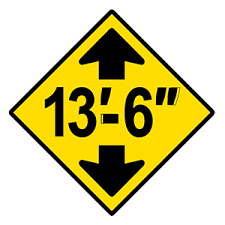
This road sign means:
Low clearance.
Unless otherwise posted, the speed limit on interstates is:
70 mph